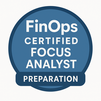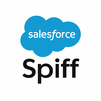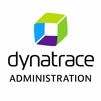
MuleSoft Integration Architect Training empowers learners to master enterprise-grade API and integration architecture using the MuleSoft Anypoint Platform. The course dives into API-led design, multi-cloud and hybrid integration patterns, resilience engineering, security, governance, CI/CD automation, and monitoring strategies. Participants gain the expertise to architect scalable, reusable, and secure APIs, modernize legacy systems, and drive digital transformation. Ideal for solution architects, senior developers, and integration leaders across industries.
Mulesoft Integration Architect Training Interview Questions Answers - For Intermediate
1. What is the Mule event and what does it contain?
A Mule event is a core concept that carries data through Mule flows. It consists of a message (with payload and attributes) and variables (flow variables, session variables). Understanding the event structure is critical for manipulating data, applying logic, and managing flow state.
2. What are Shared Resources in MuleSoft?
Shared Resources allow components like connectors (HTTP Listener, JMS, Database, etc.) to be configured in a separate domain project and shared across multiple Mule applications. This promotes consistency and reduces duplication across large-scale integration architectures.
3. How do you manage environments in MuleSoft?
Environments such as Dev, QA, UAT, and Prod are configured in Anypoint Platform. Property placeholders, secure property files, and externalized configuration (via Anypoint Secrets Manager) ensure each environment has its appropriate configurations while keeping sensitive data protected.
4. What are the key differences between SOAP and REST APIs?
SOAP is a protocol with strict standards, XML-based messaging, and WS-Security, suitable for enterprise-level integrations. REST is an architectural style, lightweight, and typically uses JSON, offering flexibility, ease of use, and performance for modern web and mobile integrations.
5. What is a Policy in MuleSoft?
A policy is a reusable configuration applied to APIs through the API Manager. It enforces security, rate limiting, throttling, SLA, CORS, or custom logic without modifying the underlying API implementation. This allows architects to standardize API management and governance.
6. How do you manage API lifecycle in MuleSoft?
API lifecycle is managed through stages: Design (RAML, API specs), Development (implementing APIs), Testing (functional, performance), Deployment, Monitoring, and Retirement. The Anypoint Platform supports full lifecycle management with version control, collaboration, and governance features.
7. What is the purpose of the MuleSoft Exchange?
Anypoint Exchange is a centralized repository for discovering, publishing, and reusing APIs, connectors, templates, examples, and API fragments. It enables faster development by promoting reuse and ensuring that enterprise assets follow consistent standards.
8. How do you perform load testing on MuleSoft APIs?
Load testing is done using tools like JMeter, Gatling, or BlazeMeter. MuleSoft also integrates with API functional testing tools. Architects simulate concurrent requests, monitor performance, identify bottlenecks, and tune applications accordingly to meet SLA requirements.
9. What are some common integration patterns you use?
Common patterns include Request-Reply, Publish-Subscribe, Scatter-Gather, Content Enricher, Message Filter, Aggregator, and Circuit Breaker. Architects select patterns based on system requirements, performance goals, and fault tolerance considerations in complex integration scenarios.
10. What is Circuit Breaker and why is it used?
A Circuit Breaker pattern protects systems from cascading failures by stopping repeated calls to a failing service. In MuleSoft, it is often implemented via custom logic, MuleSoft policy, or using a Resilience4j library. It improves system resilience and stability.
11. What is the role of API Fragments?
API Fragments are partial pieces of RAML specifications (like data types, examples, traits, or resource types) that can be reused across multiple APIs. They ensure consistency, reduce duplication, and make API development more efficient across large projects.
12. How do you manage logging in MuleSoft?
Logging is implemented using the Logger component, with standard practices for correlation IDs, request/response payload logging, and error details. Logs can be centralized using CloudHub, Anypoint Monitoring, or exported to external tools (Splunk, ELK) for better observability.
13. How do you manage connection pooling in MuleSoft?
For connectors like Database, JMS, or HTTP, connection pooling parameters such as Max Pool Size, Idle Timeout, and Validation Queries are configured carefully. This ensures optimal resource utilization, improves performance, and prevents connection leaks in high-load scenarios.
14. What is Anypoint Visualizer?
Anypoint Visualizer provides a real-time, interactive view of application networks and API dependencies. It helps architects understand the architecture, monitor performance and traffic patterns, and identify bottlenecks or unoptimized integration flows across distributed environments.
15. What is a Scatter-Gather Router and when would you use it?
The Scatter-Gather Router allows simultaneous invocation of multiple processing routes and aggregates their responses. It is used when parallel processing can improve performance or when aggregating data from multiple sources is needed to enrich the API response.
Mulesoft Integration Architect Training Interview Questions Answers - For Advanced
1. How should the API-led connectivity approach be tailored for large enterprises?
In large enterprises, API-led connectivity must address complex system landscapes and organizational structures. It begins with categorizing APIs into System, Process, and Experience layers to promote reuse and simplify integration. Governance processes define design standards, versioning practices, and data models to ensure consistency across multiple business units. Enterprise-wide API catalogs improve discoverability and collaboration. Security is applied uniformly through centralized identity providers and API policies. Architectural patterns such as event-driven APIs and streaming are leveraged for real-time data needs. To manage scale, CI/CD pipelines and DevOps practices are implemented, with automated quality gates to maintain compliance and performance standards.
2. What is the role of Anypoint Visualizer in governing API ecosystems?
Anypoint Visualizer provides real-time, dynamic visualization of application and API dependencies across the enterprise. It plays a crucial role in governance by exposing runtime relationships between APIs, helping architects identify potential bottlenecks and compliance gaps. It also highlights security risks, such as unauthorized service calls or ungoverned endpoints. Visualizer aids in performance tuning by correlating traffic patterns with application performance. Additionally, it supports impact analysis by showing downstream dependencies, enabling informed decisions during version upgrades or API deprecation.
3. How can asynchronous patterns improve integration architectures in MuleSoft?
Asynchronous patterns decouple producers from consumers, improving scalability, fault tolerance, and responsiveness. In MuleSoft, these patterns can be implemented using JMS, AMQP, or VM queues, enabling reliable message delivery even when backend systems are slow or unavailable. Asynchronous APIs prevent client timeouts and allow long-running processes to execute independently. They also enable event-driven architectures, where changes in data trigger downstream actions in near real-time. Asynchronous patterns simplify retry and error handling strategies, leading to more resilient integrations.
4. How should monitoring be designed for enterprise-grade MuleSoft integrations?
Enterprise-grade monitoring requires comprehensive visibility into API performance, availability, and security. Anypoint Monitoring provides deep insights with pre-built and custom dashboards, alerting on KPIs such as response times, error rates, and throughput. It should be integrated with enterprise APM tools to provide end-to-end observability across the application stack. Distributed tracing enables correlation across microservices and APIs. Proactive alerts ensure issues are addressed before they impact users. In multi-region and hybrid deployments, monitoring must cover all runtimes uniformly. Dashboards tailored for different audiences (operations, development, business) ensure that each stakeholder receives actionable insights.
5. What are the key considerations when designing APIs for high availability?
Designing APIs for high availability involves eliminating single points of failure, ensuring scalability, and supporting graceful degradation. APIs should be deployed across multiple availability zones or regions. Stateless API design allows horizontal scaling and seamless failover. Load balancers distribute traffic and health checks monitor service health. Circuit breakers and retries mitigate temporary failures. Asynchronous patterns decouple critical processes. APIs should return meaningful fallback responses when dependencies are unavailable. Infrastructure should be resilient, with automated failover and backup mechanisms. Continuous monitoring ensures that SLA compliance is maintained under varying load conditions.
6. What is the role of metadata management in API-led integration?
Metadata management enables organizations to track and govern API assets effectively. Metadata such as data lineage, ownership, classification, version history, and usage statistics provide context for each API. MuleSoft’s Anypoint Exchange stores metadata along with API contracts. Metadata catalogs integrate with enterprise data governance platforms to ensure consistency and compliance. Metadata helps automate impact analysis during API changes and facilitates reuse by making it easier to discover APIs. Clear metadata improves developer productivity and supports auditability for regulatory compliance.
7. How should API versioning be handled in highly regulated industries?
In regulated industries (such as healthcare or finance), versioning must preserve strict backward compatibility and auditability. Semantic versioning is used, with major versions introduced only when breaking changes are required. Deprecated versions are supported for extended periods, allowing consumers sufficient time to migrate. Documentation must clearly describe changes, and contract testing verifies compatibility. API Manager can host multiple concurrent versions with appropriate SLAs. Regulatory requirements often mandate that version history and API changes are logged and traceable. Impact analysis must be conducted before introducing changes to ensure compliance with regulations and service contracts.
8. What are the trade-offs between synchronous and asynchronous APIs?
Synchronous APIs offer simplicity and immediate feedback, making them suitable for real-time transactions. However, they tie up system resources and may introduce latency under high load. Asynchronous APIs enable loose coupling, scalability, and resilience but introduce complexity in managing state and eventual consistency. The choice depends on business needs: user-facing interactions often require synchronous APIs, while batch processing, long-running operations, and event-driven use cases benefit from asynchronous patterns. Hybrid approaches—combining synchronous initiation with asynchronous processing—can provide an optimal balance.
9. How should shared resources be managed in MuleSoft?
Shared resources such as HTTP listeners, JMS connectors, and database connection pools should be managed through Mule Domain Projects. This ensures consistent configuration and efficient resource utilization across multiple Mule applications. Connection pooling parameters must be tuned based on expected workloads. Resource usage should be monitored to prevent bottlenecks. Isolation strategies (such as dedicated connection pools per tenant or API) can prevent noisy-neighbor effects. Versioning of shared resources must be controlled to avoid introducing breaking changes to dependent applications.
10. How can legacy batch processes be modernized with MuleSoft?
Legacy batch processes can be modernized using MuleSoft’s Batch Module, which supports parallel processing, checkpointing, and fault tolerance. APIs can be designed to trigger batch jobs, enabling them to fit into event-driven architectures. Data can be streamed incrementally instead of processed in large batches, reducing latency and resource contention. Batch results can be exposed via APIs, enabling real-time status visibility. Over time, batch processes can be replaced with near-real-time APIs using patterns such as CDC (Change Data Capture) and event sourcing, improving data freshness and agility.
11. What is the significance of canonical data models in API-led design?
Canonical data models provide a consistent and normalized representation of data across the enterprise, decoupling consumers from the specifics of backend systems. This reduces integration complexity, simplifies transformations, and enables reuse of Process and Experience APIs. Canonical models foster data quality and standardization, supporting initiatives such as MDM (Master Data Management). Changes in backend systems require only adjustments in System APIs, without affecting upstream consumers. Governance processes should control the evolution of canonical models to ensure stability and broad applicability.
12. How can MuleSoft integrations be designed for observability?
Observability goes beyond monitoring to provide deep insights into system behavior and root cause analysis. MuleSoft integrations should include structured logging with correlation IDs for traceability across distributed systems. Business-relevant metrics should be emitted, in addition to technical metrics. Distributed tracing tools integrate with Anypoint Monitoring to visualize end-to-end transaction flows. Health checks expose API and application status. Failure scenarios should be simulated regularly to test observability coverage. Observability practices enable faster troubleshooting, better capacity planning, and continuous improvement.
13. How can deployment automation be achieved across multiple environments?
Deployment automation is implemented using CI/CD pipelines with environment-specific configurations managed through property placeholders, secure vaults, or Anypoint Secrets Manager. Pipelines handle artifact promotion from development to staging to production. Infrastructure-as-Code tools such as Terraform or CloudFormation provision and manage infrastructure consistently. Automated smoke and regression tests validate deployments. Release orchestration tools manage complex deployments across multiple regions or data centers. Rollback strategies and blue-green deployments minimize downtime and risk. Deployment automation supports rapid, reliable delivery of integration solutions.
14. What is the role of API productization in modern integration strategies?
API productization transforms APIs from technical interfaces into reusable business assets. It involves defining clear API contracts, SLAs, pricing models (for external monetization), and support structures. Productization improves discoverability and drives adoption by internal and external developers. API products are versioned, monitored, and governed throughout their lifecycle. Analytics provide insight into usage and value delivered. Productized APIs enable faster innovation and revenue opportunities, supporting platform business models. Governance ensures that productized APIs align with strategic business objectives and regulatory requirements.
15. How should governance processes be adapted for federated API development?
In federated API development, governance must balance central oversight with team autonomy. Design standards, security policies, and API lifecycle practices are established centrally, often codified as API guidelines and reusable templates. API discovery and reuse are facilitated through a central Exchange, but development and ownership are distributed to domain teams. Automated governance (e.g., linting, contract testing, policy enforcement) enables scalability. Federated review boards and communities of practice promote knowledge sharing and alignment. Metrics such as reuse rates and compliance scores help measure governance effectiveness and guide continuous improvement.
Course Schedule
| Jan, 2026 | Weekdays | Mon-Fri | Enquire Now |
| Weekend | Sat-Sun | Enquire Now | |
| Feb, 2026 | Weekdays | Mon-Fri | Enquire Now |
| Weekend | Sat-Sun | Enquire Now |
Related Courses
Related Articles
Related Interview
- SailPoint IdentityIQ Interview Questions Answers
- Microsoft 365 Administrator Essentials (MS-102) Training Interview Questions Answers
- SAP Logistics Execution Training Interview Questions Answers
- SP3D-Electrical, Smart Plant Electrical (SPEL) Training Interview Questions Answers
- Collibra Interview Questions Answers
Related FAQ's
- Instructor-led Live Online Interactive Training
- Project Based Customized Learning
- Fast Track Training Program
- Self-paced learning
- In one-on-one training, you have the flexibility to choose the days, timings, and duration according to your preferences.
- We create a personalized training calendar based on your chosen schedule.
- Complete Live Online Interactive Training of the Course
- After Training Recorded Videos
- Session-wise Learning Material and notes for lifetime
- Practical & Assignments exercises
- Global Course Completion Certificate
- 24x7 after Training Support











 Join our Live Instructor-Led online classes delivered by industry experts
Join our Live Instructor-Led online classes delivered by industry experts